 At NIFS, we believe in the power of movement. That’s why our partnership with NuStep has become an integral part of NIFS Pump It for Parkinson’s, a nationwide initiative that raises awareness about Parkinson’s Disease (PD) while inspiring communities to take meaningful steps (literally and figuratively) toward better health.
At NIFS, we believe in the power of movement. That’s why our partnership with NuStep has become an integral part of NIFS Pump It for Parkinson’s, a nationwide initiative that raises awareness about Parkinson’s Disease (PD) while inspiring communities to take meaningful steps (literally and figuratively) toward better health.
Every April, during Parkinson’s Awareness Month, Pump It for Parkinson’s unites communities across the nation on a shared mission to highlight the critical role exercise plays in managing PD symptoms. At the heart of this event is the NuStep cross trainer, a machine that has not only become a hallmark of our program but also a gateway for residents to rediscover the joy of movement.
For many residents, the NuStep offers a level of approachability and ease that makes starting or returning to exercise possible. Its seated, low-impact design eliminates the barriers that often discourage seniors from engaging in fitness, especially those managing mobility challenges or chronic conditions.
In one community, a resident who had never stepped foot in the fitness center joined Pump It for Parkinson’s because of a PD diagnosis, and quickly discovered how enjoyable and empowering regular movement could be. Stories like this remind us why the NuStep is so much more than a piece of equipment, but also a bridge to better fitness.
The beauty of Pump It for Parkinson’s is its flexibility. The NuStep serves as the cornerstone of the event, but we encourage communities to build on it in ways that engage their residents and staff:
- Organizing a community-wide 1k walk event.
- Highlighting Group Fitness Classes: From cardio drumming to dance classes, we’ve seen communities get creative by adding group activities that complement the NuStep challenge.
- Inclusive Opportunities: Every step counts when building awareness, so we offer step-conversion charts and alternative activities like walking, biking, or using the elliptical trainer.
Parkinson’s Disease affects more than 10 million people worldwide, including many in the senior living communities we serve. Exercise has been shown to slow the progression of PD symptoms, improve balance and coordination, and enhance overall quality of life. By combining education with action, Pump It for Parkinson’s sheds light on these benefits while fostering a culture of wellness and inclusivity.
Throughout the event, communities host educational booths, share resources about PD, and invite residents and staff to learn more about how they can support those living with the disease. This blend of awareness and activity is what makes the program so impactful.
In 2024, participants nationwide achieved over 18 million steps, and this year, we’re aiming even higher and know we can meet our 25 million step goal. The impact of this program goes far beyond the numbers. Residents gain confidence, friendships blossom, and communities come together in ways that inspire lasting change. We’re proud to offer this event which has become hallmark for many senior living communities and invite you to join us in making 2025 our most impactful year yet!


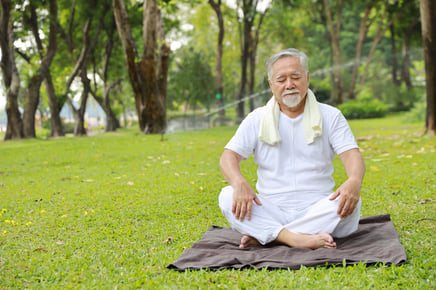 It has often been thought that core strength can only to be achieved through sit ups, crunches, and planks but in recent years there has been a lot more discussion about the way we breathe and how it effects our core. If you participate in 1-1 training or group fitness, you have probably heard your trainer tell you to breathe and brace your core through a particular exercise. What does it mean to effectively brace your core and why is it important? Is it to see your abdominals, provide you strength or to help with your posture? In all reality, we use our core for many daily tasks such as standing tall, getting up off a chair, or even walking. Learning how to brace your core is fundamental in creating a strong foundation for all movements and can also help to aide in injury prevention.
It has often been thought that core strength can only to be achieved through sit ups, crunches, and planks but in recent years there has been a lot more discussion about the way we breathe and how it effects our core. If you participate in 1-1 training or group fitness, you have probably heard your trainer tell you to breathe and brace your core through a particular exercise. What does it mean to effectively brace your core and why is it important? Is it to see your abdominals, provide you strength or to help with your posture? In all reality, we use our core for many daily tasks such as standing tall, getting up off a chair, or even walking. Learning how to brace your core is fundamental in creating a strong foundation for all movements and can also help to aide in injury prevention.
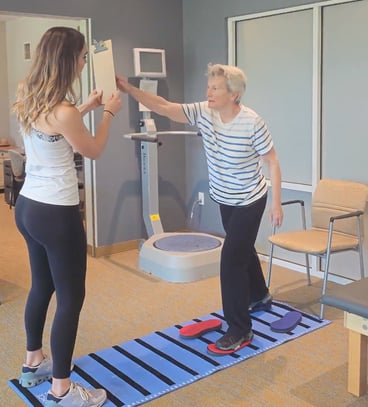 Every senior living community offers group fitness classes. If you want to stand out from the competition, you have to offer more.
Every senior living community offers group fitness classes. If you want to stand out from the competition, you have to offer more.
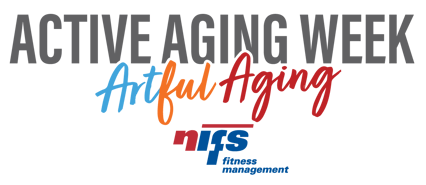 As the seasons change and leaves take on vibrant hues of red, yellow, and orange we are reminded that much like an artist, we can craft our lives in beautiful ways, and what better time to celebrate that reminder with our senior residents than during Active Aging Week? Active Aging Week, celebrated annually, shines a light on the importance of maintaining an active and engaged lifestyle as we age. This year, at NIFS, we’ve decided to focus on “aging artfully” and help the residents in the communities that we partner with age well through embracing their creativity.
As the seasons change and leaves take on vibrant hues of red, yellow, and orange we are reminded that much like an artist, we can craft our lives in beautiful ways, and what better time to celebrate that reminder with our senior residents than during Active Aging Week? Active Aging Week, celebrated annually, shines a light on the importance of maintaining an active and engaged lifestyle as we age. This year, at NIFS, we’ve decided to focus on “aging artfully” and help the residents in the communities that we partner with age well through embracing their creativity.
.jpg?width=461&height=307&name=GettyImages-1432465103%20(1).jpg)
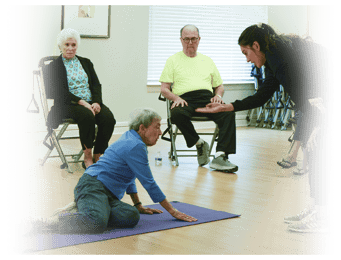 There are several health-related observances through the year and NIFS staff enjoy finding ways to use these to bring attention to important topics. One of those is Falls Prevention Week in September. As a fitness management provider for senior living communities, fall prevention is a hot topic so older adults can live vibrantly for as long as possible. But you might be wondering how can you make something that doesn’t sound so fun be engaging for residents? We have found that there is a love/hate relationship everyone has with any program labeled “Fall Prevention” because residents are certainly interested in learning about how to prevent falls but have a healthy fear of falling. What better way to face a fear than head on and in a practical way, right?
There are several health-related observances through the year and NIFS staff enjoy finding ways to use these to bring attention to important topics. One of those is Falls Prevention Week in September. As a fitness management provider for senior living communities, fall prevention is a hot topic so older adults can live vibrantly for as long as possible. But you might be wondering how can you make something that doesn’t sound so fun be engaging for residents? We have found that there is a love/hate relationship everyone has with any program labeled “Fall Prevention” because residents are certainly interested in learning about how to prevent falls but have a healthy fear of falling. What better way to face a fear than head on and in a practical way, right?
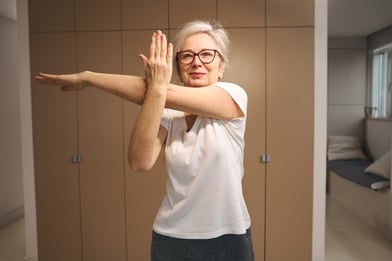 Anyone and everyone can benefit from having better balance. From professional athletes to the active aging population, balance plays a critical role in everyday life. Whether a professional gymnast is flipping on a beam, or a senior is simply trying to lower their risk of falling, improving balance starts with two things: identifying
Anyone and everyone can benefit from having better balance. From professional athletes to the active aging population, balance plays a critical role in everyday life. Whether a professional gymnast is flipping on a beam, or a senior is simply trying to lower their risk of falling, improving balance starts with two things: identifying 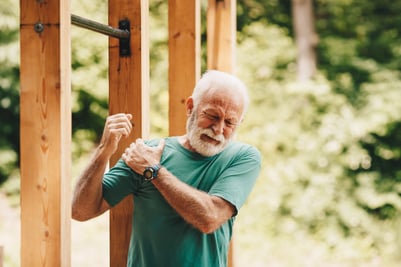 “No Pan, No Gain”
“No Pan, No Gain”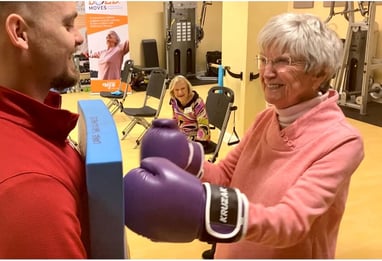 The prevalence of Parkinson’s Disease is on the rise. Previous numbers indicated that 60,000 Americans are diagnosed each year and
The prevalence of Parkinson’s Disease is on the rise. Previous numbers indicated that 60,000 Americans are diagnosed each year and 
.jpg?width=485&height=372&name=Nustep%20(1).jpg) The NuStep is a great multifunctional piece of equipment. Did you know the NuStep can be used for more than just building endurance? You can build strength, cardio, AND endurance depending how you use it. This is what makes the
The NuStep is a great multifunctional piece of equipment. Did you know the NuStep can be used for more than just building endurance? You can build strength, cardio, AND endurance depending how you use it. This is what makes the